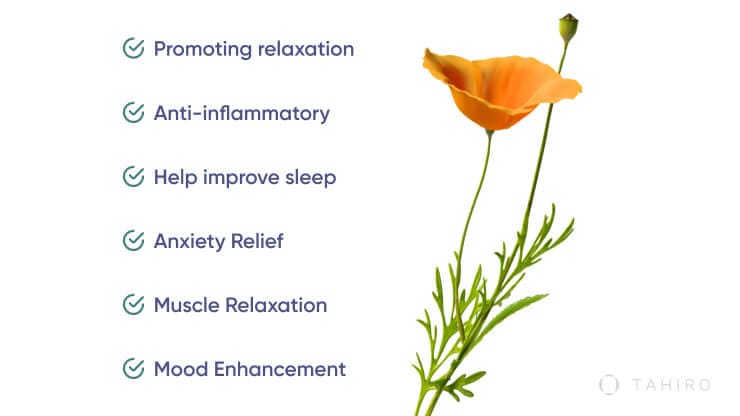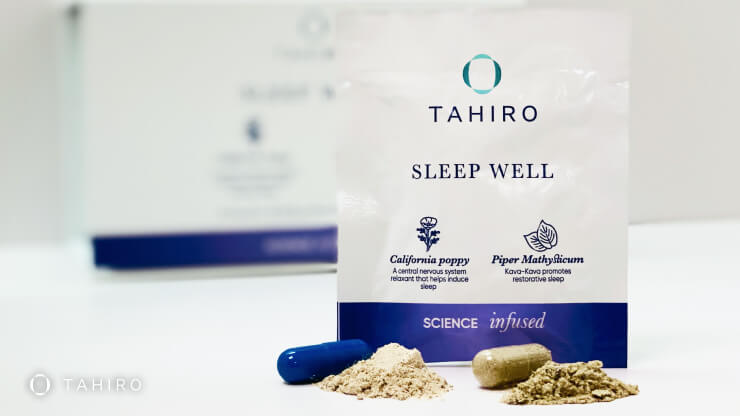Native to the Western United States, the California Poppy, scientifically known as Eschscholzia californica, has long been recognized by Native Americans for its therapeutic qualities[6]. Today, it's lauded not just for its vibrant beauty, but for the calmingand pain-relieving propertiesfound within its vibrant petals and stems.
What is California Poppy?
Eschscholzia californica, commonly known as California Poppy, is a perennial plant that has been traditionally utilized for its potential to alleviate pain and promote sleep [6]. Its vibrant orange flowers are not only a sight to behold but are also the source of its therapeutic properties.
California Poppy Uses
The traditional uses of this golden-hued plant primarily revolve around its potential to promote relaxation, alleviate pain, and induce sleep. These uses can be attributed to a mix of is quinoline alkaloids present in the plant, some of which are exclusive to California Poppy [2, 4].
How does California Poppy work?
- Neurotransmitter Modulation: The herb interacts with the GABA neurotransmitter system, promoting relaxation, reducing anxiety, and aiding sleep [1].
- Serotonin Receptor Binding: Its alkaloids may bind to serotonin receptors, potentially stabilizing mood and acting as a natural antidepressant [2].
- Anti-inflammatory Properties: Isoquinoline alkaloid compounds in the poppy may exhibit anti-inflammatory effects, aiding in pain reduction [6].
- Natural Analgesic: The poppy's potential to block pain signals in the nervous system supports its traditional use as a pain reliever [7].
Benefits of California Poppy
- Sleep Aid: The poppy's interaction with GABA receptors can help improve sleep latency and overall sleep quality [1].
- Anxiety Relief: By modulating neurotransmitter activity, California Poppy may help reduce symptoms of anxiety and promote a calm state of mind [2].
- Pain Relief: Traditional uses and some preliminary studies suggest the herb's potential in alleviating various types of pain [6, 7].
- Mood Enhancement: Its potential interaction with serotonin receptors can stabilize mood and promote a sense of well-being [2].
- Muscle Relaxation: Enhanced GABA activity may lead to muscle relaxation, beneficial for those with muscle tension [1].
- Support for Drug Withdrawal: Preliminary evidence suggests potential benefits in alleviating opioid withdrawal symptoms [8].
- Digestive Health: The poppy has been traditionally used to treat certain digestive disturbances [9].
Potential Side Effects of Eschscholzia Californica
While California Poppy is generally considered safe, like all herbs, it's essential to be aware of potential side effects. Some individuals might experience mild symptoms from excessive intake [8]. However, these occurrences are rare.
Is it Safe to Take a California Poppy Supplement?
Yes, California Poppy is generally considered safe. However, it's always best to consult with a healthcare professional before starting any new supplement, especially if you're on medication or have underlying health conditions [7].
How do California Poppy Supplements Make You Feel?
Most people report feeling relaxed and calm after taking California Poppy supplements. Some also find it easier to drift into sleep [6].
When Should I Take My California Poppy for Sleep?
Can California Poppy Be Taken Long Term?
There's limited research on the long-term use of California Poppy. It's always recommended to follow the dosage instructions and consult with a healthcare professional.
How Much California Poppy Can You Take in a Day?
The appropriate dosage can vary based on several factors, including the specific preparation and individual needs. Generally, for adults, the recommended daily dosage range for California poppy extract in capsule form is: 250 to 500 mg.
Always follow the recommended dosage on the product label or as advised by a healthcare professional.








